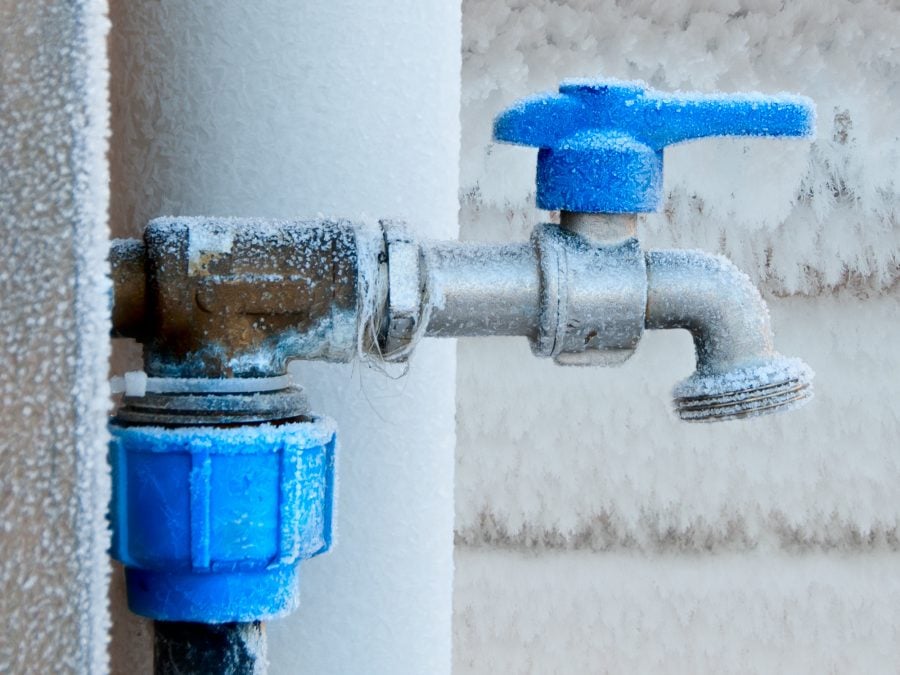How to Keep Your Pipes from Freezing Issues: Crucial Guidance
How to Keep Your Pipes from Freezing Issues: Crucial Guidance
Blog Article
The article which follows pertaining to How To Avoid Freezing Pipes is seriously intriguing. You should check this stuff out.

Winter can damage your plumbing, specifically by freezing pipes. Below's exactly how to prevent it from occurring and what to do if it does.
Introduction
As temperature levels drop, the danger of icy pipes rises, potentially bring about costly repair work and water damages. Understanding exactly how to stop icy pipes is critical for property owners in cool environments.
Understanding Icy Pipelines
What triggers pipes to ice up?
Pipelines freeze when subjected to temperatures below 32 ° F (0 ° C) for expanded durations. As water inside the pipes freezes, it increases, putting pressure on the pipeline wall surfaces and potentially creating them to break.
Threats and damages
Frozen pipes can bring about supply of water disruptions, residential property damages, and expensive repair work. Burst pipelines can flooding homes and trigger comprehensive structural damages.
Indications of Frozen Piping
Recognizing frozen pipelines early can avoid them from bursting.
Just how to determine icy pipes
Look for reduced water circulation from faucets, uncommon odors or noises from pipelines, and visible frost on revealed pipes.
Avoidance Tips
Shielding at risk pipes
Cover pipelines in insulation sleeves or use warm tape to safeguard them from freezing temperature levels. Concentrate on pipes in unheated or external locations of the home.
Heating methods
Keep interior areas properly heated up, particularly locations with pipes. Open cabinet doors to permit warm air to circulate around pipelines under sinks.
Shielding Outside Plumbing
Yard pipes and exterior faucets
Detach and drain pipes garden tubes prior to winter. Set up frost-proof faucets or cover outdoor faucets with protected caps.
What to Do If Your Pipelines Freeze
Immediate activities to take
If you think icy pipelines, maintain faucets available to ease stress as the ice thaws. Make use of a hairdryer or towels soaked in warm water to thaw pipelines slowly.
Long-Term Solutions
Structural adjustments
Consider rerouting pipes far from exterior wall surfaces or unheated areas. Include additional insulation to attic rooms, basements, and crawl spaces.
Updating insulation
Invest in top quality insulation for pipelines, attic rooms, and walls. Correct insulation helps preserve regular temperatures and decreases the danger of icy pipes.
Final thought
Avoiding icy pipes needs positive actions and fast responses. By comprehending the causes, indications, and safety nets, home owners can shield their pipes throughout winter.
6 Proven Ways to Prevent Frozen Pipes and Protect Your Home
Disconnect and Drain Garden Hoses
Before winter arrives, start by disconnecting your garden hoses and draining any remaining water. Close the shut-off valves that supply outdoor hose bibs and leave the outdoor faucet open to allow any residual water to drain. For extra protection, consider using faucet covers throughout the colder months. It’s also important to drain water from any sprinkler supply lines following the manufacturer’s directions.
Insulate Exposed Pipes
Insulating your pipes is an effective way to prevent freezing. Pipe insulation is readily available at home improvement stores and is relatively inexpensive. Pay close attention to pipes in unheated areas such as the attic, basement, crawl spaces, or garage. Apply foam insulation generously to create a buffer against the cold. You can also wrap your pipes in heat tape or thermostat-controlled heat cables for added warmth.
Seal Air Leaks
Inspect your home for any cracks or openings that could let in cold air. Seal any holes around the piping in interior or exterior walls, as well as the sill plates where your home rests on its foundation. Additionally, make sure to keep your garage door closed unless you’re entering or exiting. Leaving it open creates a significant air leak that can lead to frozen pipes.
Allow Warm Air Circulation
During cold snaps, it’s essential to allow warm air to circulate evenly throughout your home. Leave interior doors ajar to promote better airflow. Open kitchen and bathroom cabinets to help distribute heat consistently around the rooms. If you have small children or pets, be sure to remove any household chemicals or potentially harmful cleaners from open cabinets for safety.
Let Faucets Drip
A small trickle of water can make a big difference in preventing ice formation inside your pipes. When temperatures drop significantly, start a drip of water from all faucets served by exposed pipes. This continuous flow helps prevent the water from freezing. Additionally, running a few faucets slightly can relieve pressure inside the pipes, reducing the chances of a rupture if the water inside does freeze.
https://choateshvac.com/6-proven-ways-to-prevent-frozen-pipes-and-protect-your-home/

We hope you enjoyed our post about How to prepare your home plumbing for winter weather. Many thanks for spending some time to read our post. Are you aware of somebody else who is intrigued by Winter Plumbing Precautions: Preventing Frozen Pipes? Why not promote it. I take joy in your readership.
Schedule Today! Report this page